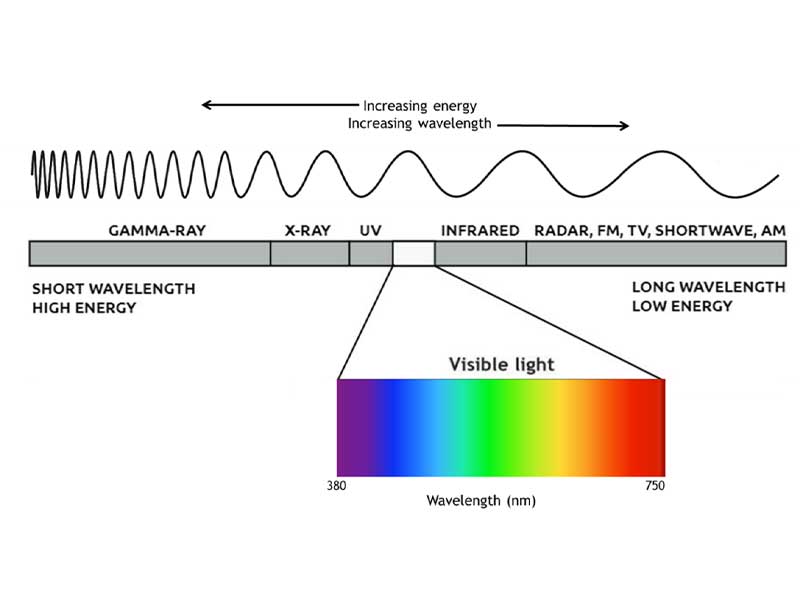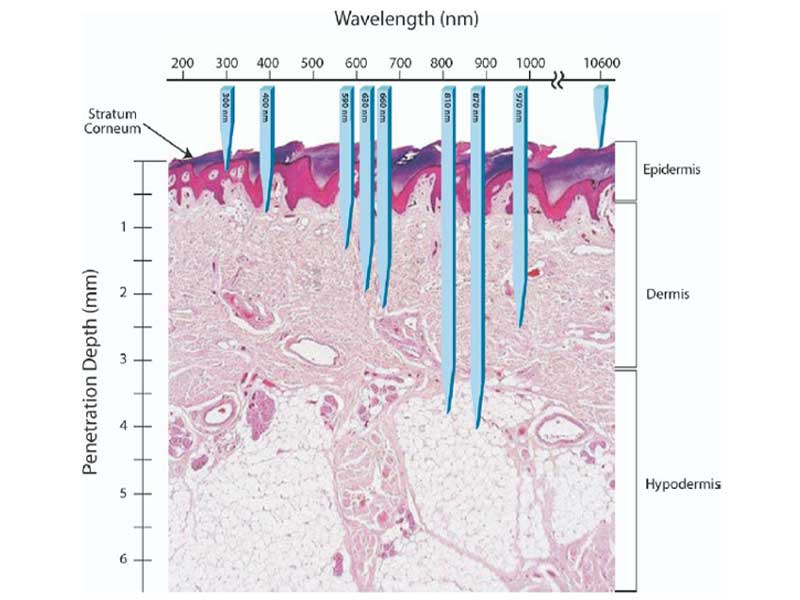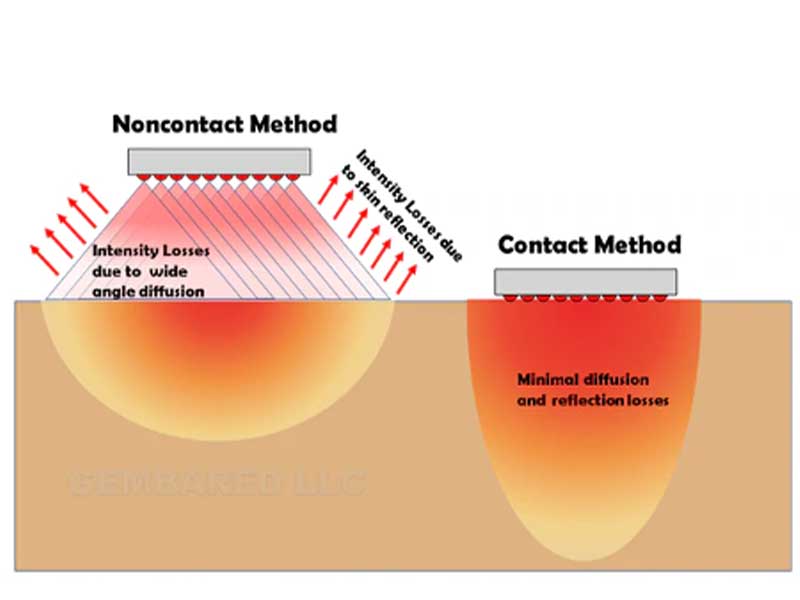Red Light Therapy
Health Benefits of Red Light Therapy
- Red Light therapy speeds the healing time of tendons, muscles, and nerves.
- Red Light therapy has been shown to speed the recovery of wounds, acne, eczema, psoriasis, and scar tissue.
- Red Light therapy has been proven to grow hair.
- Red Light therapy has been shown to restore hormone balance.
- Red Light Therapy raises testosterone levels naturally.
- Red Light Therapy increases blood flow.
- Red Light Therapy balances brainwaves increasing mental clarity and balancing mood.
What is Red Light Therapy
First we will discuss what the mainstream view of what Red Light Therapy Proposes. At the end I will explain what research performed in my clinic has concluded. Red Light Therapy uses the principle of photobiomodulation in the wavelengths of 400-1000 Nanometers. Red Light contains wavelengths between 620-700 Nanometer ranges. Near Infrared light contains wavelengths between 700-1000 Nanometers. Photobiomodulation is the use of non-ionizing (will be discussed later) optical radiation in the visible and near infrared spectrum to exert an effect on living tissues. Certain wavelengths of light are absorbed by compounds called chromophores to elicit photophysical and photochemical effects on tissues. Research has shown that the effects of photobiomodulation can be seen in the mitochondria the power house in our cells. The mitochondria converts glucose from the blood into ATP. ATP is the compound our cells use for the energy needed to perform the function that the cell is specialized to perform. During the process of ATP production in the mitochondria chemical messengers are released within the cell which travel to the nucleus of the cell. These chemical messengers activate the process of protein transcription from the DNA. Cells exposed to wavelengths within the 400-1000 nanometer wavelength spectrum perform the tasks they are designed to perform more effectively. A muscle cell will build internal proteins faster to heal damage. Nerve cells will recover faster from injury and communicate more efficiently. High collagen producing tissues such as tendons, ligaments, skin and hair will produce collagen faster. Endocrine glands will produce hormones properly. Immune system cells will clean up damaged tissues decreasing inflammation and build immunity. Every cell in our body either directly or indirectly will function better. Direct effect is the absorption of energy at the tissues on the surface. The indirect effects are less understood. Studies show changes occur in tissues much deeper than penetration of energy given. Later we will discuss a possible explanation for this indirect benefit.

Red Light vs. Near Infrared Light Therapy
Red light is part of the visible light spectrum at 620-700 Nanometers. Near Infrared light is just outside of the visible light spectrum at 700-1000 Nanometers. The eye can detect wavelengths from 380-700 Nanometers putting near infrared light outside the visible light spectrum.
The infrared spectrum is divided into 3 subclasses
- Near Infrared 700-1000 Nanometers
- Middle Infrared 1000-3000 Nanometers
- Far Infrared 3000-1,000,000 Nanometers

Wavelengths in the optical, near infrared range, and middle infrared range will be absorbed by the tissues resulting in Photomodulation by exciting electrons at the cellular level. Far Infrared wavelengths have a dual effect with a mild photomodulation effect on cells and a secondary effect of heating the tissue by its vibrational effects on water.
Near Infrared, Middle Infrared and part of Far Infrared exhibit photomodulation effects in the tissues. Remember photomodulation is the effect exhibited on the cell which is responsible for the therapeutic effects of light therapy. The only difference between wavelengths is depth of penetration and photon energy resonance. It would make sense that the longer the wavelength the deeper the tissue penetration but this is not true. As the graphic below will show as the wavelength gets longer in the near infrared spectrum we get a peak of penetration. As the wavelength gets longer in the Middle Infrared and the Far Infrared range the depth of penetration decreases. The reason for this is water has an absorbance at 970 Nanometer wavelengths. At this wavelength the photons excite electrons of water molecules causing them to move faster creating heat. This is the physics behind a microwave oven. This is why infrared saunas heat up our skin just as sunlight heats us up.

What Dose of Red Light Energy is Effective
Dosage is critical to getting the desired benefits of photobiomodulation. If your tissues get to low of a dose you get no effect if it is too high a dosage it negates the effects. Dosage is based on Joules per centimeter squared, this refers to how much energy from the light is absorbing into your tissues. Research has shown 1 to 4 Joules per cm squared is the effective range. What most people offering light therapy in a clinical setting do not understand is all the research performed uses a direct to skin contact method. The types of lights used for research purposes are covering small areas of tissue with specialized lights that do not create heat therefore can make direct contact. All of the commercial produced light therapy units use lights such as LEDs which cannot make direct contact with the skin. When the light is not in direct contact we lose much of the energy as a result of tissue reflection.

To properly account for the reflection we need to anticipate some loss of energy and use lights with a higher energy output to deliver an effective dose. Many products on the market only claim they are using the proper frequency but lack the correct output for an effective dose.
What Red Light Therapy Actually Does?
As a skeptical I had a major issue with this new therapy. How can it possibly benefit anything deeper than the skin? In my practice I am treating deep soft tissue injuries. Companies marketing red light laser would claim to have high enough power to reach the muscles but I understood the power only controls the dose of energy not the depth. I own a 635 nm 5 mw/CM2 red light laser that worked very well for an allergy elimination protocol over acupuncture points. I experimented with this laser treating pain by using it on acupuncture points but I did not find it to work better than acupuncture needles. I tested the laser by altering the allergy protocol slightly by placing it over superficial nerves and not acupuncture points I found it still worked. This ruled out the meridian systems direct involvement in the treatment success. The laser as an electromagnetic stimulus has multiple effects on the nervous system at varying locations over superficial nerves. I authored a book on this topic The Conscious Canary: A complete Model of Biophotonic Communication in Multicellular Life which led me to experimenting and researching red light therapy. Red Light Therapy has a different effect on the body versus a laser. The laser emits a single frequency of polarized electromagnetic energy while a Red Light Therapy panel emits a broad range of frequencies of unpolarized electromagnetic energy. The interesting part is the two sources have different effects. In my book you can read the physics behind the differences which is to broad for this article. The key is the laser by passes the melanin/hemoglobin pigment system and directly effects the nervous system, while the LED light emitted for a Red Light Therapy panel is absorbed in the pigment system which is converted into single frequencies of polarized biophotonic light. The frequencies are organized by spinal level.
This difference is where the benefit lies from photobiomulation from an LED light source. The skin will benefit from the direct effect of increased mitochondrial activity. As a cosmetic tool red light therapy is very effective at keeping the skin looking younger and healthy. The mitochondrial chromospheres within the epidermis absorb the energy from the Red Light Panel optimizing cellular function. The red blood cells will also benefit from the direct effect. Hemoglobin will absorb the energy from the red light therapy increasing oxygen carrying capacity. The red blood cells will also live longer than their normal 120-140 lifespan. The more amazing part is the shape of the red blood cells will be optimized, they become smaller with a regular biconcave shape. This is important for two reasons. They will travel thru the capillaries faster delivering oxygen more efficiently but will also decrease capillary viscosity. High capillary viscosity is the cause of high blood pressure.
The indirect effect deals with the topic of my research involved with the book I published. In simple terms the melanin pigment system absorbs electromagnetic energy in the near-infrared and all visible light which it transfers to the neurologic system by sensory nerves. Each nerve level absorbs a certain frequency of light predominately. This frequency of energy is part of a complex communication network within the glial cell network. The glial cells are in continuous contact with all nerves and form a higher level of information processing than basic neural processing. The brain has three times more glial cells than nerves. The glial cells transmit information at a frequency which correlates to electromagnetic energy within the near infrared and visible light frequencies. Our bodies are tuned to absorb solar energy through the melanin pigments and convert this energy into electron flow within the protein networks of the glial system. Each cell in our body also utilizes electromagnetic energy of light to control the processes within the cell. Photobiomodulation research discovered one aspect of the cellular biophotonic system, red light frequencies drive mitochondrial activity.
The indirect effect of LED Red Light Therapy works to only facilitate the melanin absorption within the glial network that operates in the red frequency. Basically it is like going in the sun but only part of the solar spectrum is absorbed, so it only enhances part of the glial system. This is not a bad thing because if you do not get enough sun on your uncovered body, which none of us do, the panel will enhance this part of the glial system. Cold lasers work by mechanisms which can balance the frequencies within the glial system by bypassing the pigment system and directly interacting with the biofrequencies within the glial cells.
The interesting part is I developed a dry needling protocol which allows the energy emitted by the LED lights to go deeper into the muscular system. The unpolarized frequencies emitted from the LED lights can be transmitted into the muscular system increasing the mitochondrial function. The increased mitochondrial function speeds the healing process of overstressed muscles.
I advice my patients that it is not a bad idea to purchase an LED light for home use for the general health benefits it gives to the red blood cells ability to transport oxygen more effectively. Research has shown that red light therapy increases the life span of red blood cells and makes them smaller with perfect shape. Shape and size is very important to red blood cells as they move through the capillaries. Large misshapen red blood cells have been theorized to be the cause of high blood pressure because they increase the capillary viscosity. Multiple studies have shown the benefits of red light therapy on blood pressure. The only catch is repetition, the benefits take up to two months of regular use six times per week for twenty minutes per session.
Suggested video for more information: